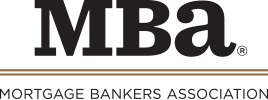
Cotality: Mortgage Fraud Risk Rises

Mortgage fraud risk increased 8.2% year-over-year, with an estimated 1 in 118 applications showing indications of fraud, according to Cotality, Irvine, Calif.
But the firm’s latest National Mortgage Application Fraud Risk Index noted fraud risk decreased by 2.7% from the previous quarter.
Cotality examined six areas of mortgage fraud and found an increase in only one area: undisclosed real estate fraud. This category of fraud increased 9.1% year-over-year. Undisclosed real estate fraud includes undisclosed debt, possible occupancy misrepresentation, and/or derogatory credit events (foreclosure, Notice of Default, short sale, etc.) being hidden from the lender. The firm noted the increase in undisclosed real estate fraud could be due to the rise in investors and more people being forced to rent because of high home prices and mortgage rates.
“Undisclosed real estate was once again the fraud segment with the highest increase,” said Matt Seguin, senior principal with Cotality Fraud Solutions. “As the percentage of investors grows, more borrowers have multiple properties and mortgages. Oftentimes, those mortgages are being refinanced simultaneously, and they may be with different lenders. This could be why we’re seeing a continuing uptick in undisclosed real estate debt.”
Overall mortgage applications increased 8% from Q2 2025 to Q3 2025, the report said. The share of applications for a purchase remains high but decreased to 67% of transactions. The share of total applications that are government backed remained steady at 25% of applications.
Cotality noted its system for warning about falling property values has seen a large increase in alerts, jumping 42% in the last quarter and four-fold compared to a year ago. Cotality’s Home Price Index confirms prices are dropping across much of the U.S as inventory increases.
Cotality also found increasing risk trends in the third quarter in several other areas: income, identity and occupancy.
Income: An increase in alerts related to high income compared to the value of the property being purchased. This could be an indicator of inflated income or misrepresentation of occupancy.
Identity: Increased alerts about attempted identity theft including using a deceased borrower’s social security number or other names associated with a social security number.
Occupancy: Increased alerts that a primary or a second home will not be occupied as disclosed. This includes claiming owner-occupied properties when there has been a rental listing found on the property or a primary residence that has a different tax mailing address.
Cotality’s data continues to show that the two highest-risk categories are in the investment and multifamily spaces. Cotality’s data estimate for the third quarter shows 1 in 45 investment applications and 1 in 26 multifamily applications have indications of fraud risk compared to an overall average estimate of 1 in 118 for the industry as a whole.
